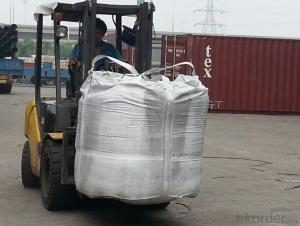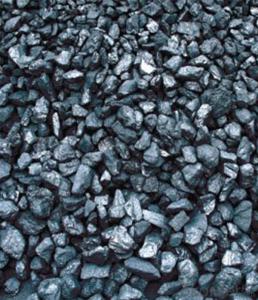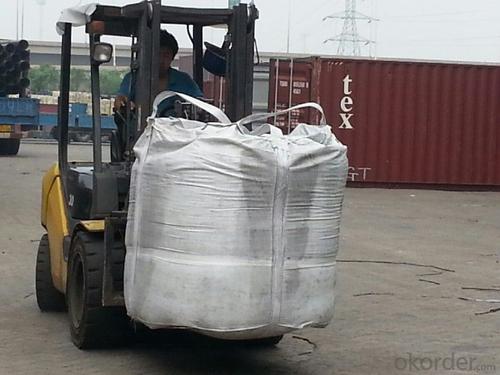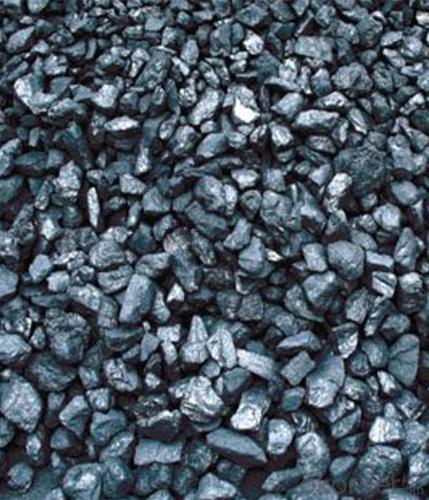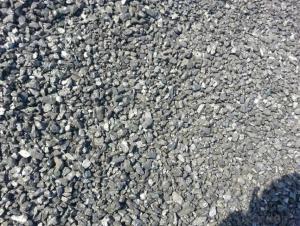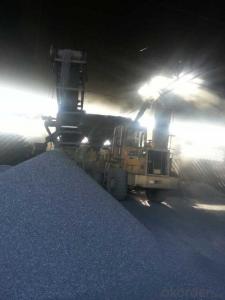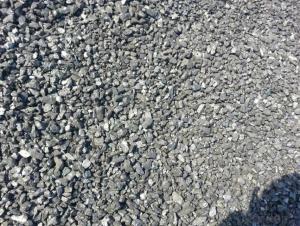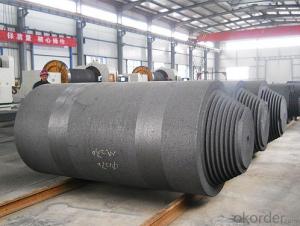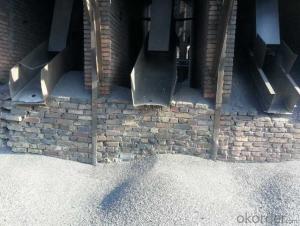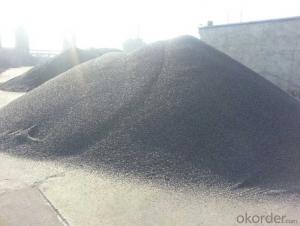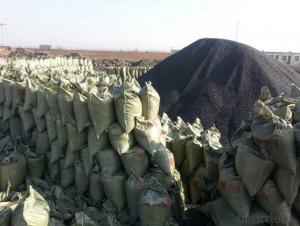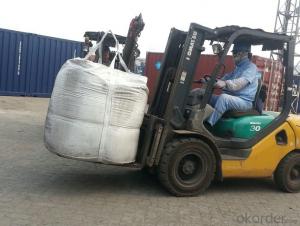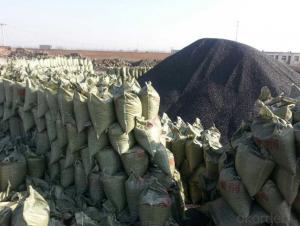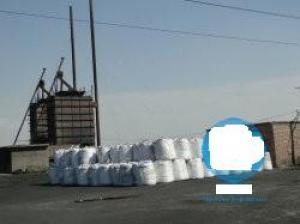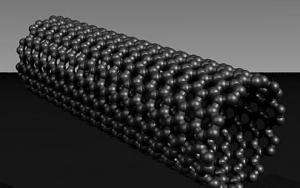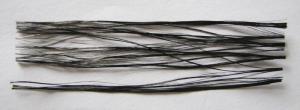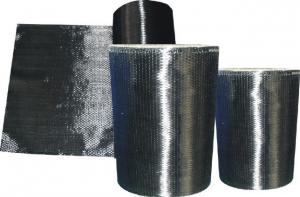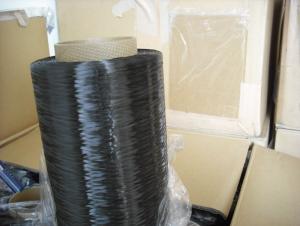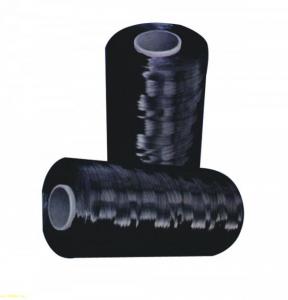Charge Coke FC92 with high and stable quality
- Loading Port:
- Tianjin
- Payment Terms:
- TT OR LC
- Min Order Qty:
- 20 m.t.
- Supply Capability:
- 3000 m.t./month
OKorder Service Pledge
OKorder Financial Service
You Might Also Like
Packaging & Delivery
25kgs/50kgs/1ton per bag or as buyer's request
Specifications
Calcined Anthracite
Fixed carbon: 90%-95%
S: 0.5% max
Size: 0-3. 3-5.3-15 or as request
It used the high quality anthracite as raw materials through high temperature calcined at over 2000 by the DC electric calciner with results in eliminating the moisture and volatile matter from anthracite efficiently, improving the density and the electric conductivity and strengthening the mechanical strength and anti-oxidation. It has good characteristics with low ash, low resistvity, low sulphur, high carbon and high density. It is the best material for high quality carbon products.
Advantage and competitive of caclined anthracite:
1. strong supply capability
2. fast transportation
3. lower and reasonable price for your reference
4.low sulphur, low ash
5.fixed carbon:95% -90%
6..sulphur:lower than 0.3%
General Specification of Calcined Anthracite:
| FC | 95 | 94 | 93 | 92 | 90 |
| ASH | 4 | 5 | 6 | 6.5 | 8.5 |
| V.M. | 1 | 1 | 1 | 1.5 | 1.5 |
| S | 0.3 | 0.3 | 0.3 | 0.35 | 0.35 |
| MOISTURE | 0.5 | 0.5 | 0.5 | 0.5 | 0.5 |
Pictures
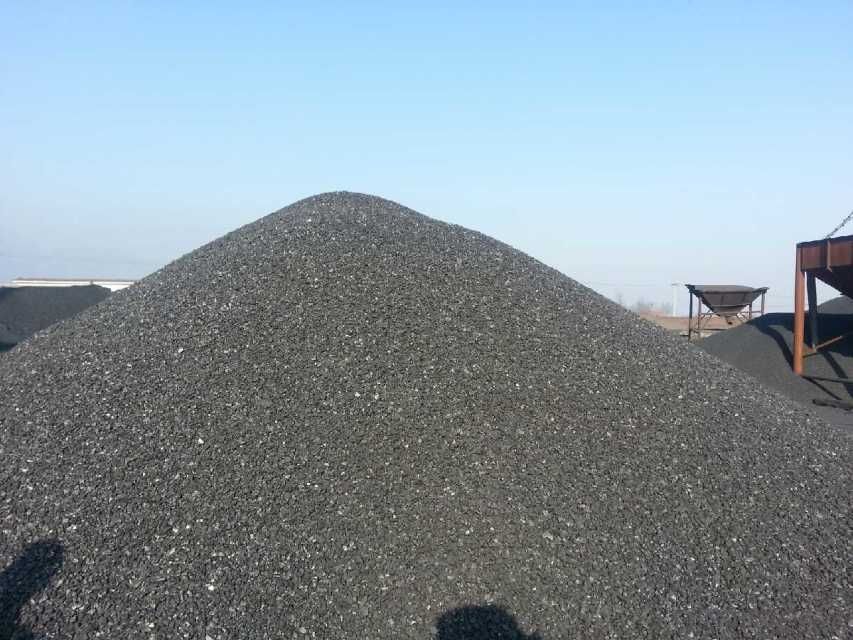
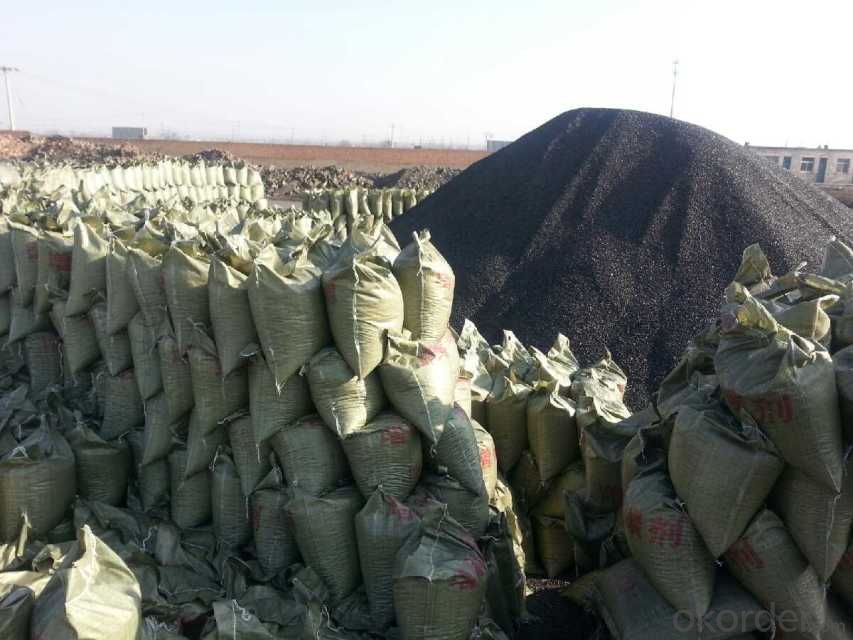
- Q: What is the carbon emission of the air conditioner?
- Air conditioner using electric energy, itself is not the direct carbon emissions, but due to power consumption, power is not the primary energy, is two times the energy, so the power will come from where it is not decided or no pollution low and zero carbon emissions.Like water power, wind energy and solar energy, clean energy generates electricity without carbon emissions. It is pollution-free and zero carbon emissions. The use of coal raw materials power generation plants have carbon emissions, so air-conditioning carbon emissions is not easy to say, it depends on the specific circumstances analysis and decision.
- Q: Can carbon be recycled?
- Yes, carbon can be recycled.
- Q: What are the consequences of increased carbon emissions on educational systems?
- Increased carbon emissions can have several consequences on educational systems. Firstly, the health impacts of pollution caused by carbon emissions can lead to increased absenteeism among students and teachers, affecting the overall learning environment. Additionally, extreme weather events linked to climate change, such as hurricanes or heatwaves, can disrupt educational infrastructure, leading to school closures and disruptions in academic schedules. Moreover, the need to address climate change and its impacts may require educational institutions to allocate resources and curriculum time to climate-related topics, potentially diverting attention and resources from other subjects. Finally, the long-term consequences of climate change, such as rising sea levels or increased natural disasters, may force the relocation or rebuilding of educational facilities, causing significant disruptions to students' education.
- Q: What should be done to deal with leakage of carbon monoxide from the plant?
- The container should be cooled by heat in time. The harm to health, carbon monoxide and hemoglobin binding capacity than oxygen 200 times larger, after inhalation, in the blood and hemoglobin binding, interference blood carrying oxygen capacity, resulting in tissue hypoxia. The skin starts to become gray, and the skin and mucous membranes are red. Severe damage to brain cells can also cause secondary diseases, light damage to the heart, and damage to pyramidal or extrapyramidal systems, including the basal ganglia. Acute poisoning: mild poisoning are headache, dizziness, lethargy, tinnitus, palpitation, nausea, vomiting, weakness, abdominal pain, weakness and other symptoms; moderate poisoning in addition to the above symptoms, and complexion, lips cherry red, rapid pulse, irritability, instability of gait, fuzzy consciousness, coma patients remain unconscious;, miosis, muscle tension increased, frequent convulsions, incontinence, depth of poisoning due to respiratory paralysis and death. Chronic effects: the main manifestation of long-term inhalation of a certain amount of carbon monoxide, fatigue, irritability, indigestion and so on, can cause damage to the nervous and cardiovascular system. The compressed gas storage requirements in bottles, should be stored in a cool, ventilated warehouse, storage temperature should not exceed 300C; keep away from heat, avoid direct sunlight; and oxygen, compressed air, oxidant and stored separately; avoid mixed mixed transport. The lighting, ventilation and other facilities in the storage room shall be explosion-proof, and the switch is located outside the warehouse. Equipped with appropriate varieties and corresponding quantity of fire-fighting equipment.
- Q: What are the properties of carbon nanotubes?
- Carbon nanotubes are cylindrical structures made entirely of carbon atoms. They have a unique set of properties that make them highly desirable in various fields of science and technology. Some of the key properties of carbon nanotubes include: 1. Exceptional strength and stiffness: Carbon nanotubes have an incredibly high strength-to-weight ratio, making them one of the strongest materials known to date. They are about 100 times stronger than steel but much lighter. This property makes them suitable for applications requiring lightweight but strong materials. 2. High electrical conductivity: Carbon nanotubes possess excellent electrical conductivity, allowing them to efficiently carry electrical current. They can be utilized as conductive components in various electronic devices, such as transistors, sensors, and energy storage systems. 3. Thermal conductivity: Carbon nanotubes exhibit high thermal conductivity, meaning they can efficiently conduct heat. This property makes them ideal for applications requiring efficient heat dissipation, such as thermal management in electronic devices. 4. Flexibility and resilience: Carbon nanotubes are highly flexible and can withstand significant deformation without breaking. They can be bent and twisted without losing their structural integrity, making them suitable for applications requiring flexibility, such as flexible electronics. 5. Unique optical and mechanical properties: Carbon nanotubes possess unique optical properties that vary depending on their structure and arrangement. They can absorb and emit light across a wide range of wavelengths, making them useful in applications like photodetectors and solar cells. Additionally, their mechanical properties, such as the ability to deform elastically, make them useful in applications requiring shock absorption and impact resistance. 6. Chemical stability: Carbon nanotubes are highly chemically stable, which means they can resist degradation or corrosion when exposed to various chemical environments. This property makes them suitable for applications in harsh conditions or as protective coatings. 7. Large aspect ratio: Carbon nanotubes have a high aspect ratio, with lengths often exceeding thousands of times their diameter. This characteristic allows them to form strong and lightweight composite materials when incorporated into a matrix, enhancing the overall strength and stiffness of the composite. Overall, the unique combination of properties exhibited by carbon nanotubes makes them an exciting and versatile material with immense potential for a wide range of applications, including electronics, aerospace, medicine, and energy storage.
- Q: How does carbon affect the formation of ground-level ozone?
- Carbon is a key contributor to the formation of ground-level ozone, also known as smog. When carbon-containing pollutants, such as vehicle exhaust and industrial emissions, are released into the atmosphere, they react with sunlight and other pollutants to form ground-level ozone. This reaction occurs more rapidly in the presence of high levels of carbon, leading to increased ozone concentrations.
- Q: How does carbon affect the properties of steel?
- Carbon is a crucial element in the production of steel and plays a significant role in determining its properties. The amount of carbon present in steel has a direct impact on its hardness, strength, and overall performance. By adding carbon to iron, the base metal of steel, it becomes significantly stronger and more durable. This is because the carbon atoms are able to occupy the spaces between iron atoms, preventing the metal from sliding or deforming easily. The higher the carbon content, the harder and stronger the steel becomes. Moreover, carbon also influences the steel's ability to be heat treated and its response to various manufacturing processes. When steel is heated and rapidly cooled, a process known as quenching, the presence of carbon allows for the formation of harder and more brittle structures, such as martensite. On the other hand, lower carbon content allows for the formation of softer and more ductile structures. In addition to its impact on strength and hardness, carbon also affects the steel's corrosion resistance. Higher carbon content can lead to reduced corrosion resistance, making the steel more susceptible to rust and other forms of degradation. This is why stainless steel, which contains a higher amount of chromium and low carbon content, is often chosen for applications where corrosion resistance is crucial. To summarize, carbon greatly influences the properties of steel. It enhances its strength and hardness, allows for heat treatment and response to manufacturing processes, and affects its corrosion resistance. The careful control of carbon content in steel is vital in order to achieve the desired properties for specific applications.
- Q: What are the advantages of carbon-based fuel cells?
- There are several advantages of carbon-based fuel cells that make them a promising technology for the future. Firstly, carbon-based fuel cells have a higher energy density compared to conventional batteries. This means that they can store and deliver more energy per unit weight, allowing for longer operating times and greater power output. This is particularly beneficial in applications where high power density and long-range capabilities are required, such as electric vehicles. Secondly, carbon-based fuel cells have a faster refueling time compared to conventional batteries. While recharging a battery can take hours, refueling a carbon-based fuel cell can be done in a matter of minutes. This is a significant advantage, as it reduces the downtime for refueling and enables a more convenient and efficient usage of the fuel cell technology. Furthermore, carbon-based fuel cells have a lower environmental impact compared to traditional combustion engines. When carbon-based fuel cells are used, the only byproducts are water and heat, making them a clean and environmentally friendly energy source. This is in contrast to internal combustion engines, which produce harmful emissions that contribute to air pollution and climate change. Another advantage of carbon-based fuel cells is their versatility and compatibility with existing infrastructure. They can be easily integrated into existing energy systems, allowing for a smooth transition from fossil fuels to cleaner energy sources. This compatibility makes carbon-based fuel cells a viable option for various applications, ranging from portable electronics to residential power generation. Lastly, carbon-based fuel cells have the potential to contribute to energy independence. As carbon-based fuels can be produced from renewable sources, such as biomass or waste, they offer a sustainable and domestically sourced energy solution. This reduces dependence on foreign oil and enhances energy security for countries. In conclusion, the advantages of carbon-based fuel cells include higher energy density, faster refueling time, lower environmental impact, compatibility with existing infrastructure, and potential for energy independence. With these benefits, carbon-based fuel cells have the potential to revolutionize the energy landscape and provide a sustainable and efficient alternative to conventional energy sources.
- Q: How does carbon impact the global water cycle?
- Carbon plays a significant role in the global water cycle as it influences the temperature and precipitation patterns. Increased levels of carbon dioxide in the atmosphere, primarily due to human activities, contribute to global warming, leading to rising temperatures. These higher temperatures enhance evaporation rates, causing more water to evaporate from oceans, lakes, and other water bodies. This increased evaporation intensifies the water cycle, resulting in more frequent and intense rainfall events. Conversely, carbon emissions also contribute to climate change, which can lead to droughts in certain regions, disrupting the global water cycle and exacerbating water scarcity issues. Overall, carbon impacts the global water cycle by influencing temperature, precipitation patterns, and the occurrence of extreme weather events.
- Q: What is carbon black used for?
- Carbon black is a versatile substance that finds applications in various industries. Primarily, it is used as a pigment and reinforcing filler in the production of rubber products, such as tires, hoses, and belts. The addition of carbon black enhances the strength, durability, and resistance to abrasion of rubber materials. Additionally, carbon black is used as a coloring agent in inks, paints, and coatings due to its excellent light-absorbing properties. It provides intense black color and improves the UV resistance of these products. Moreover, carbon black is utilized in the production of plastics, where it acts as a filler to enhance the mechanical properties of plastic components and reduce their cost. In the energy sector, carbon black is employed as a conductive additive in batteries and fuel cells. Its high electrical conductivity enhances the performance of these energy storage devices. Carbon black is also used in the manufacture of electrodes for supercapacitors, where its large surface area enables efficient energy storage. Furthermore, carbon black has applications in the construction industry as a reinforcing agent in concrete and asphalt. It enhances the strength and durability of these materials, making them more resistant to cracking and weathering. In summary, carbon black is widely used in the production of rubber, plastics, inks, paints, coatings, batteries, fuel cells, supercapacitors, and construction materials. Its properties as a pigment, reinforcing filler, coloring agent, and conductive additive make it a valuable material in numerous industrial applications.
Send your message to us
Charge Coke FC92 with high and stable quality
- Loading Port:
- Tianjin
- Payment Terms:
- TT OR LC
- Min Order Qty:
- 20 m.t.
- Supply Capability:
- 3000 m.t./month
OKorder Service Pledge
OKorder Financial Service
Similar products
Hot products
Hot Searches
